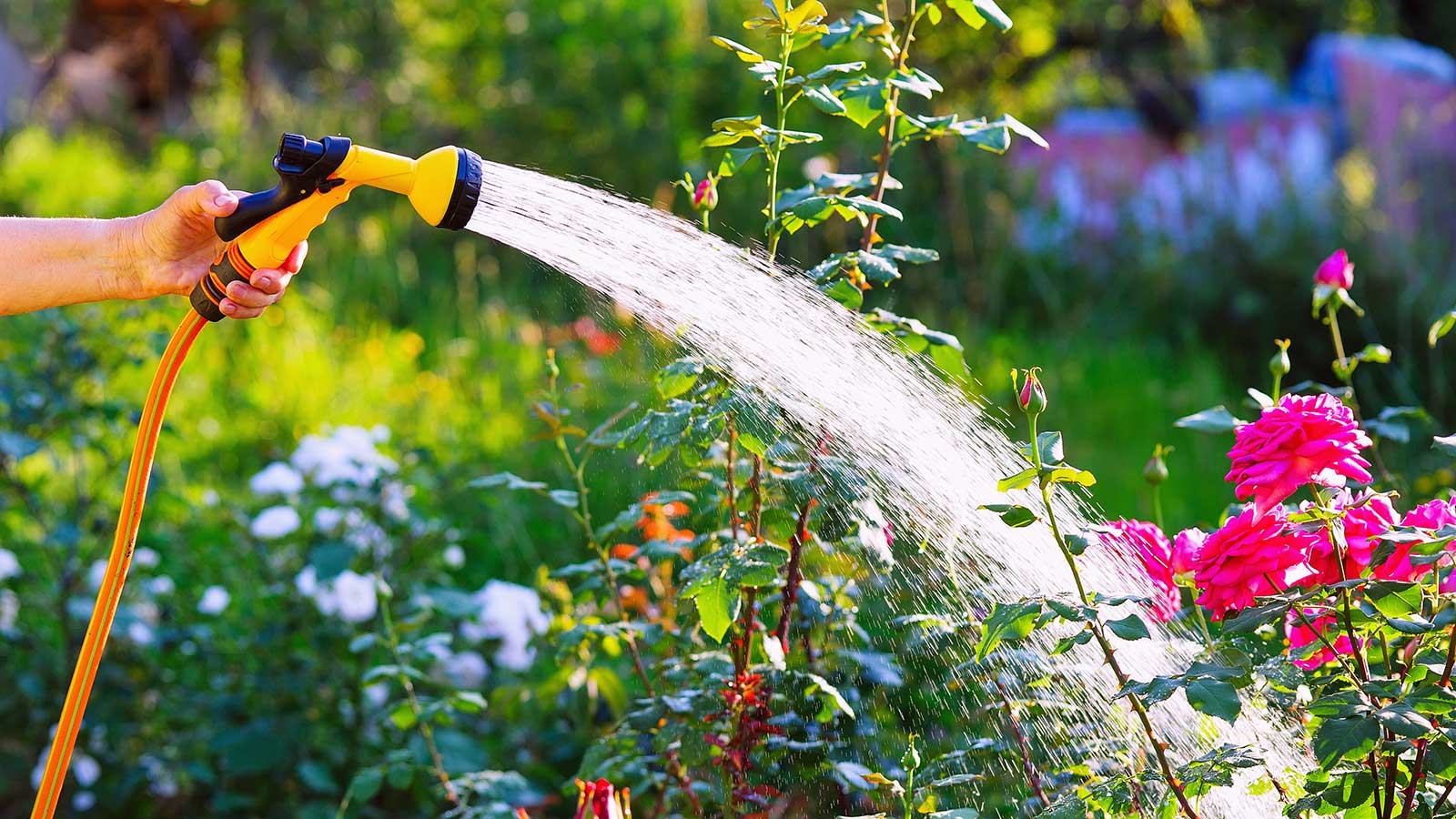
Sweltering temperatures and blue skies can pose a problem for our backyard plants, causing them to wilt – or worse. Proper watering is fundamental to help them stand up to the heat, but you may be wondering the best way to go about it.
For starters, there are some dos and don'ts of watering plants in hot weather to bear in mind. Timing and technique are important, to ensure your efforts are rewarded with results. There's also sustainability to think about, especially during hosepipe bans.
To get the lowdown, I asked gardening experts for their advice. Their tips will help you protect your plants in a heatwave and keep your outdoor space looking luscious rather than limp.
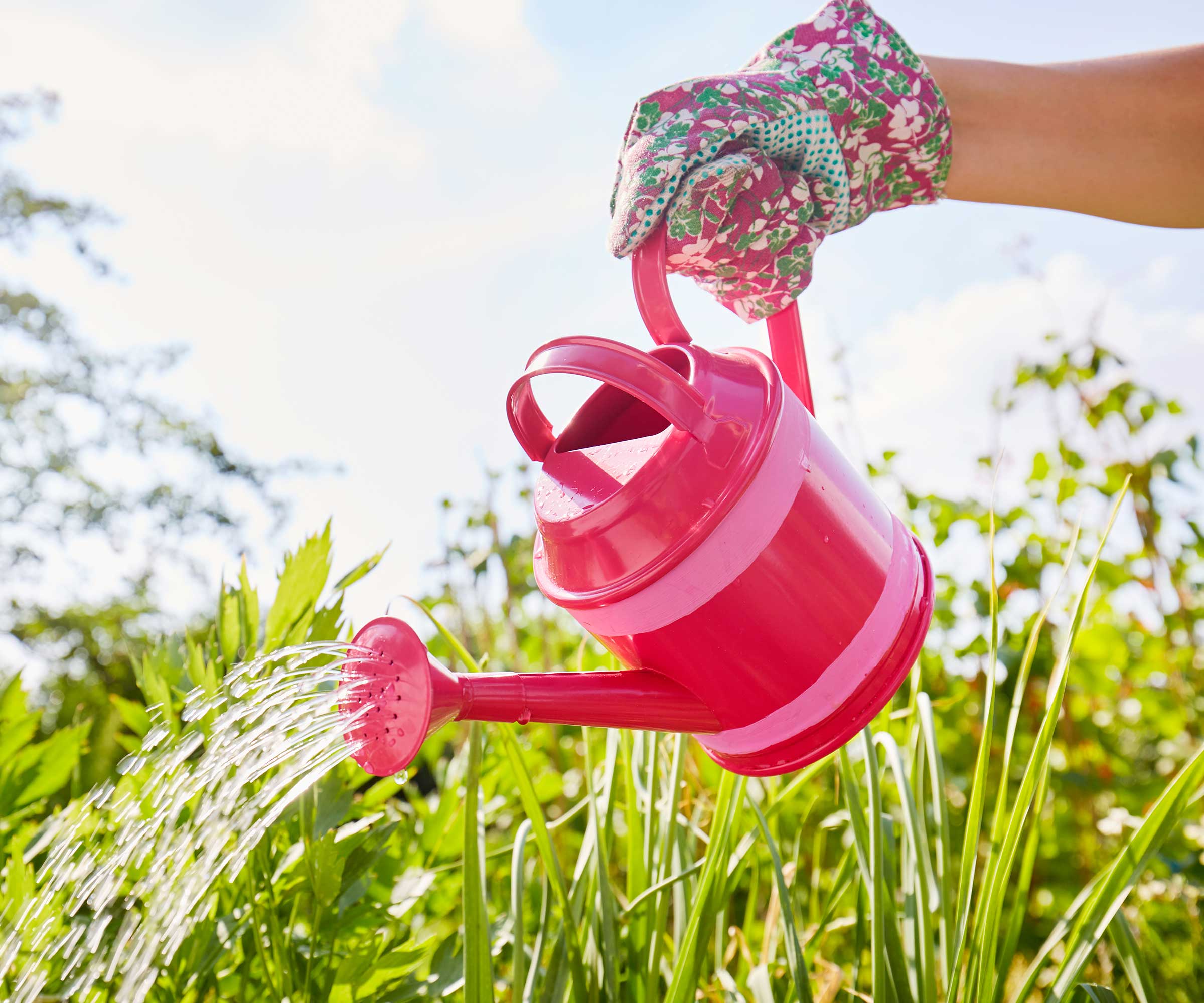
3 expert tips on how to water plants during a heatwave
Plants need watering all through the year, but during extreme heat, it's particularly crucial.
1. Water deeply and often
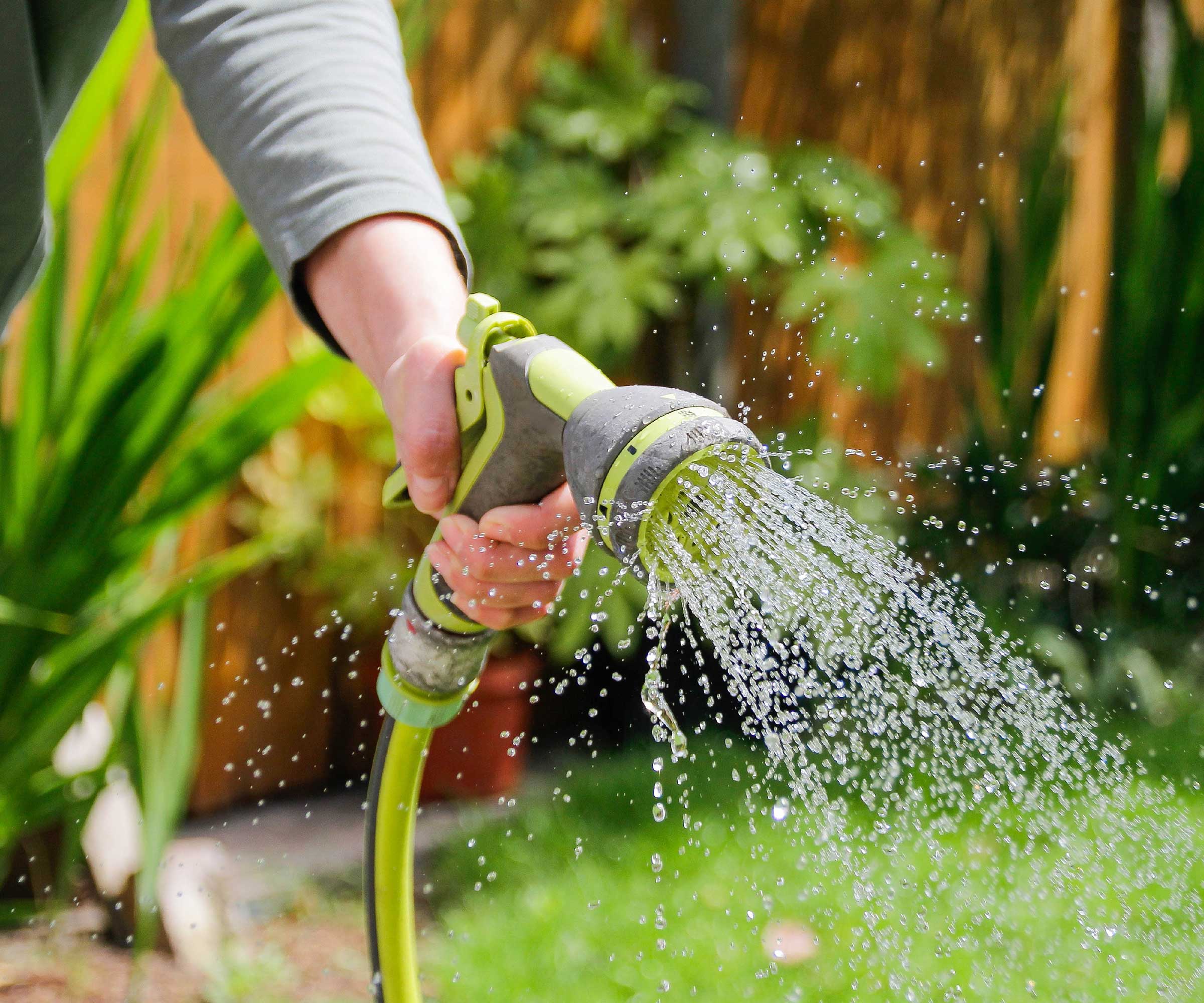
Anna Ohler, the owner of Bright Lane Gardens, says, 'In a heatwave, most outdoor plants will need to be watered daily.' She recommends checking the top one or two inches of soil – if they are dry, it's time to water.
'Water thoroughly to ensure that water can reach all the way down to the plant's roots,' she continues. Summer Thompson of Love, Plants underlines this point: 'Deep watering helps the roots grow deeper and makes plants more resilient,' she says.
Anna points out that watering containers should be done slowly if the soil is already very dry, otherwise the water can simply flow right out of the bottom. 'Ice cubes can be a helpful way to moisten the top layer of soil slowly, so it can retain more moisture the next time you water,' she adds.
Top tip: Laura Janney, founder of The Inspired Garden, recommends moving planters into the shade, if possible.
2. Prioritize the plants that need it most
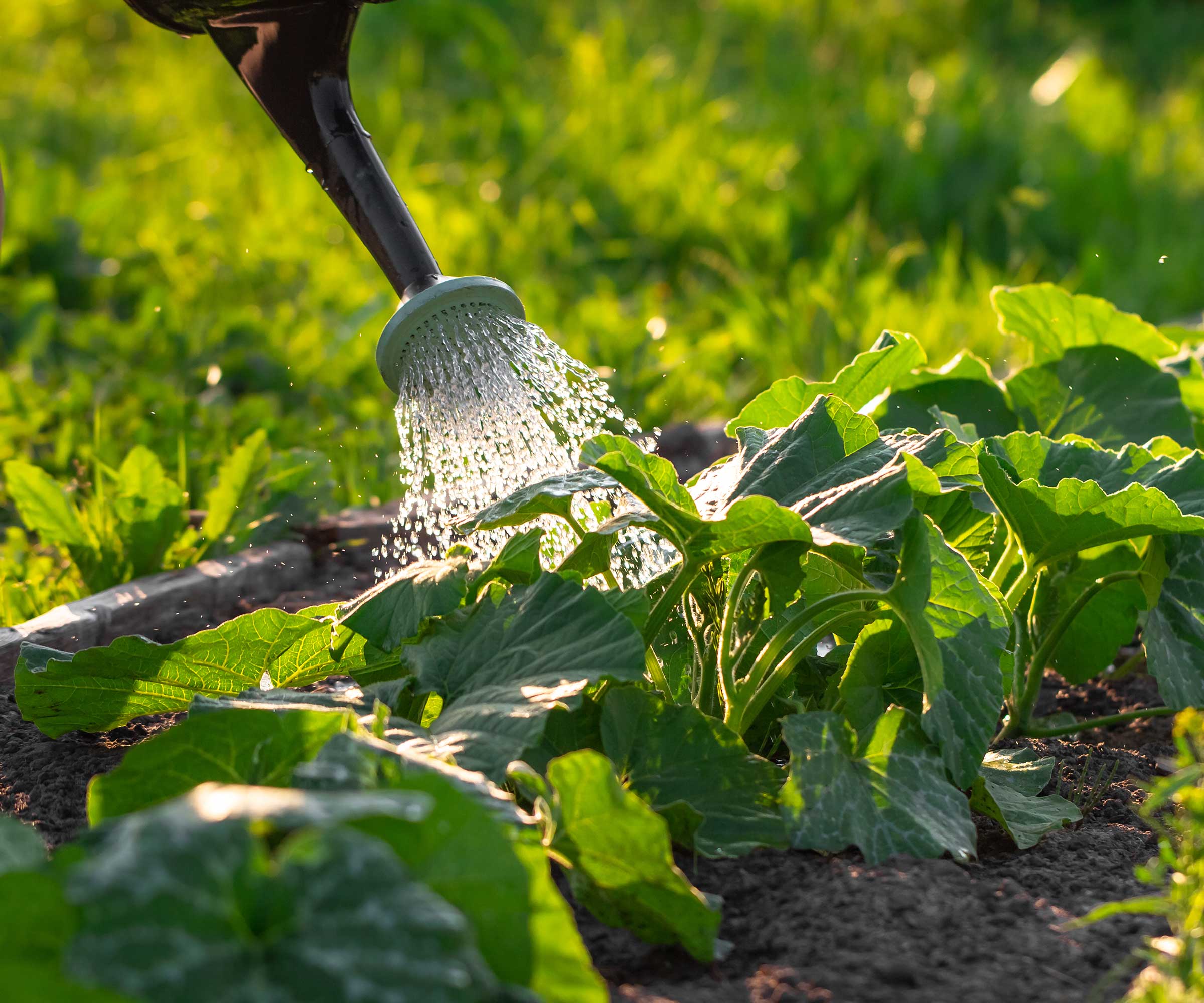
While drought-tolerant plants are tougher against dry conditions, some plants will need more attention.
These include young plants and seedlings, points out Marek Bowers of Bolder Green. 'They have less established root systems and need consistent moisture,' he explains. Newly planted trees and shrubs also need prioritizing; 'They need extra care to establish their roots.'
Marek also highlights the need to prioritize container plants, as they dry out quicker than those in the ground. And don't forget about your vegetable garden: 'Many vegetables, especially those in fruiting stages, require regular watering,' he says.
Anna also notes how more sensitive plants such as ferns and hydrangeas require more water.
3. Use sustainable methods
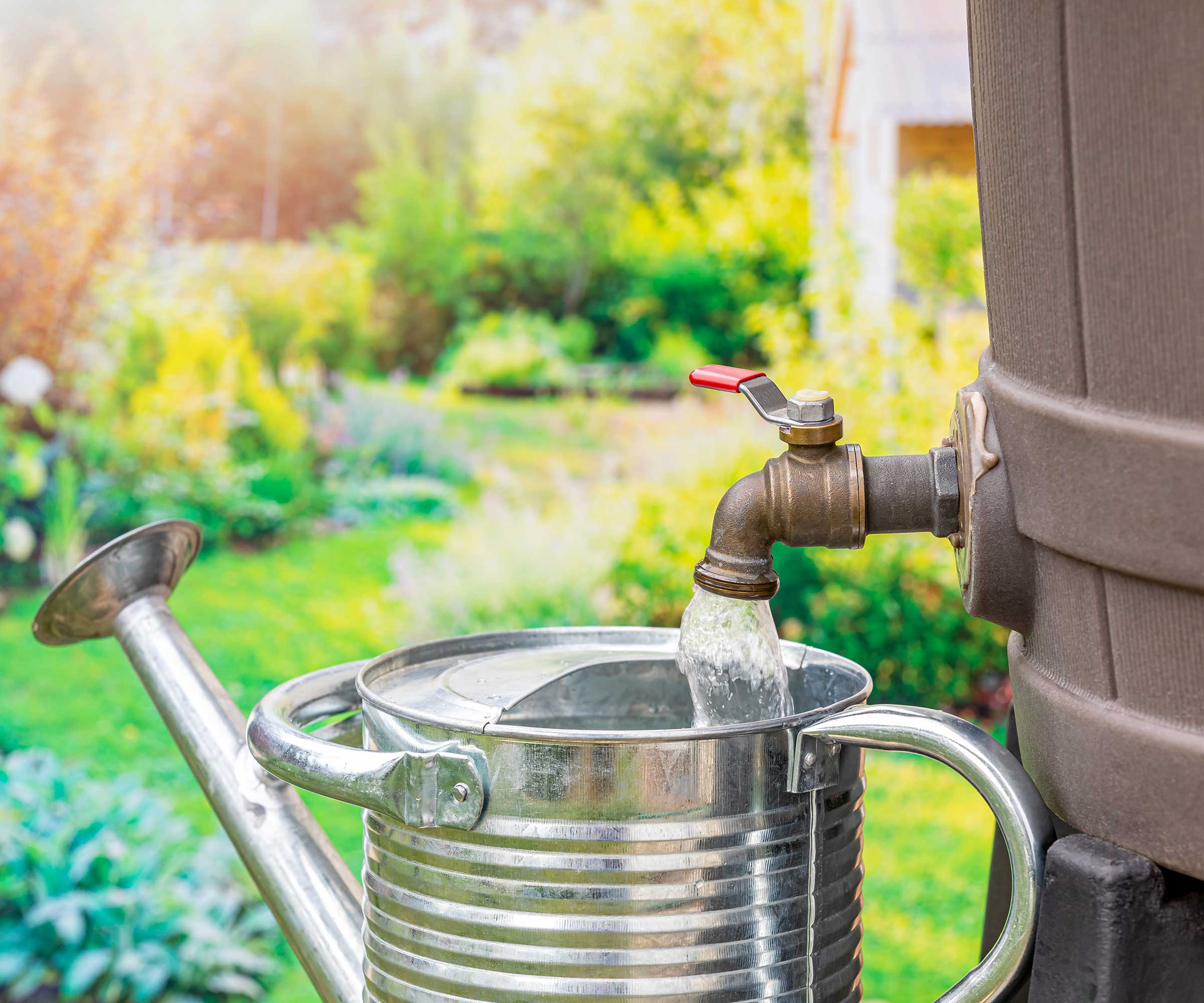
Although watering plants during a heatwave is essential, it should be done responsibly.
Harvesting rainwater using a rain barrel is a great way to garden more sustainably. Consider adding a mesh cover, available from Amazon, to keep the water free of debris and deter mosquitoes.
Think about mulching your garden plants, too. Marek explains that this helps retain soil moisture and reduce evaporation.
Anna recommends using a watering can or hand-held hose with a spray nozzle for targeted watering, ensuring you only water the plants and not the surrounding areas unnecessarily.
Marek also suggests setting up a drip irrigation system to deliver water directly to the soil and roots. However, Laura warns not to rely on irrigation systems entirely. 'Monitor your plants to ensure they are getting enough water, as systems can sometimes miss areas or overwater others. If you see a droopy plant, water it slowly and thoroughly for a few minutes,' she says.
FAQs
When is the best time to water plants during a heatwave?
Laura Janney, founder of The Inspired Garden, says, 'The best time to water plants during a heatwave is early in the morning. If that's not possible, the late afternoon or early evening is the next best choice.
'Avoid watering in the late evening, as plants may not dry out well, increasing the risk of mildew, mold, and other fungal diseases,' Laura continues. She also warns against watering in the middle of the day – this wastes resources as the water evaporates too quickly to be absorbed by the roots.
How can you help houseplants during a heatwave?
Don't forget about your indoor plants, too, which can also struggle in hot and dry conditions.
You can move them to cooler parts of the house, away from direct sunlight, and increasing the humidity around them. It's also a good idea to use curtains or shades to protect houseplants from direct sunshine, and keep them well-ventilated, using fans if necessary.
In terms of watering, Laura Janney, founder of The Inspired Garden, recommends using a soil moisture meter to ensure they are adequately hydrated. You can shop for soil moisture meters from The Sill, which also measure pH and light.
'If you plan to go away, leave one room with the air conditioning on and move all your plants there to keep them cool and protected,' Laura adds. You could also add watering globes to their pots.
Are you looking for more advice for keeping your yard looking tip-top this summer? Our guides on cutting grass in hot weather and mistakes gardeners make in a heatwave are well worth a look.







